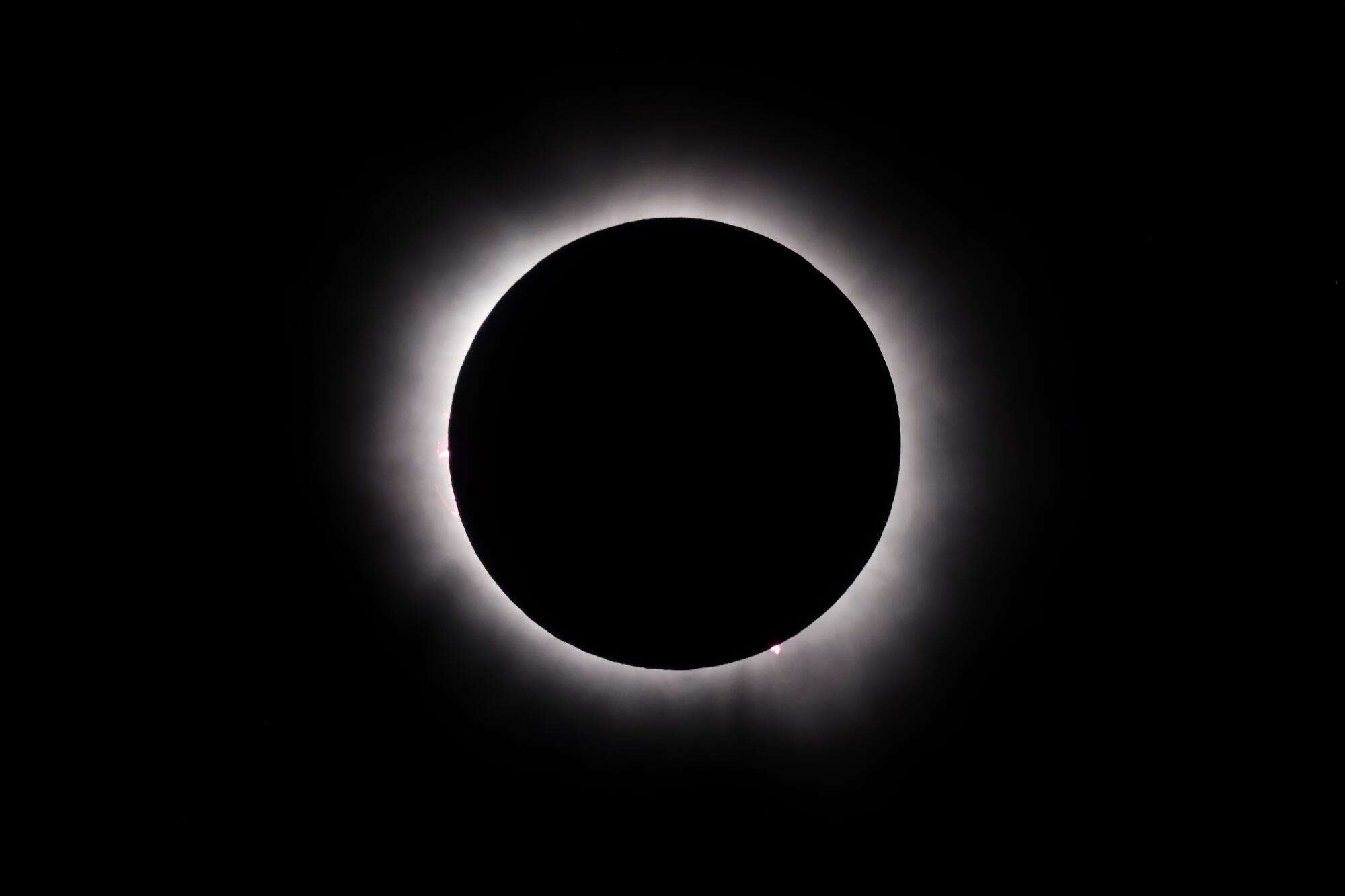
The total solar eclipse on Monday in Bee Cave, Texas.
(Andrew Gombert/Los Angeles Times)
- Share via
Millions of people across the U.S. looked up at the sky to witness a rare total solar eclipse Monday. California won’t experience totality, but there’s still plenty to see.
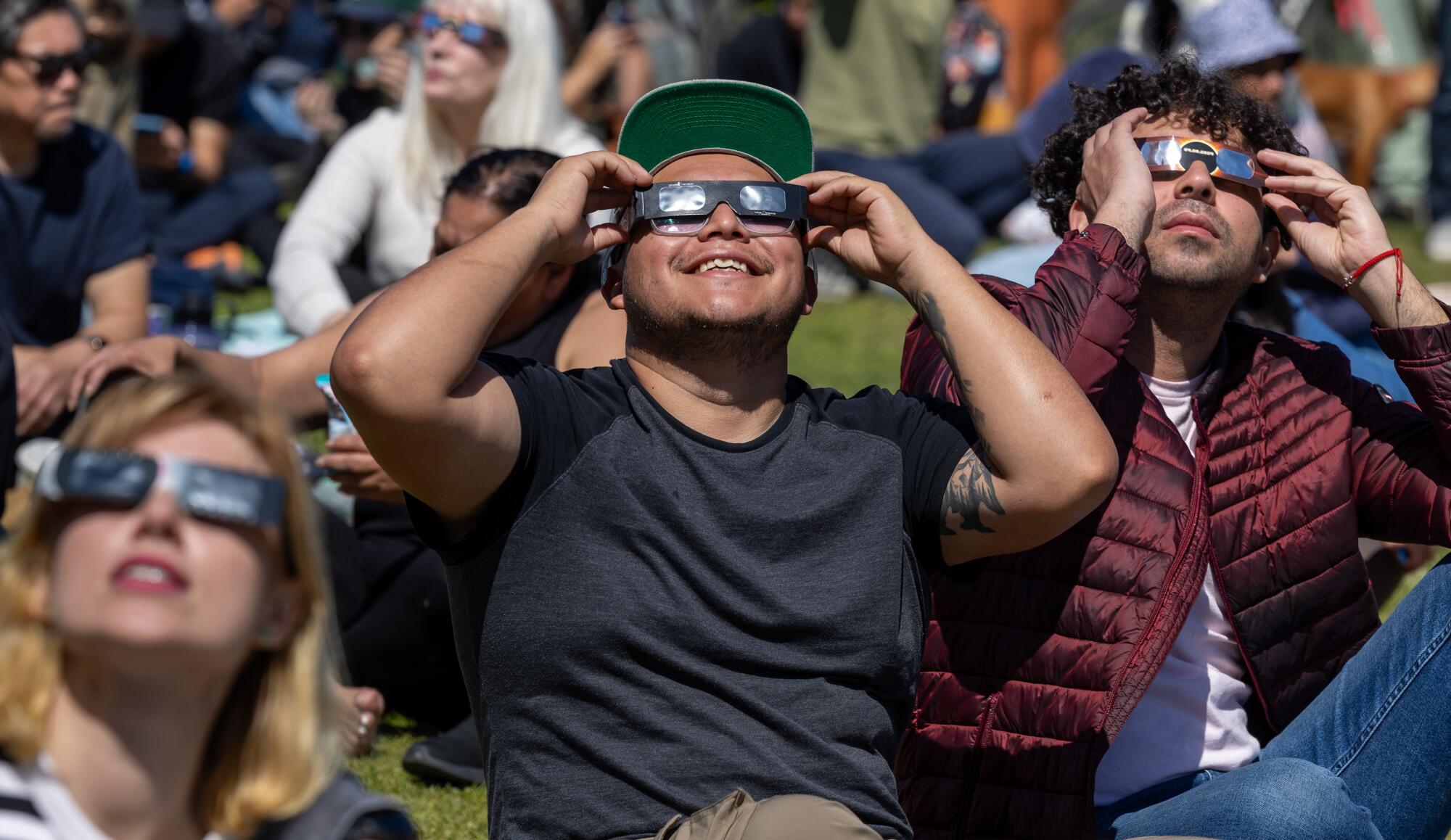
Jesus Perez, center, watches the solar eclipse at Griffith Observatory on Monday in Los Angeles.
(Brian van der Brug/Los Angeles Times)
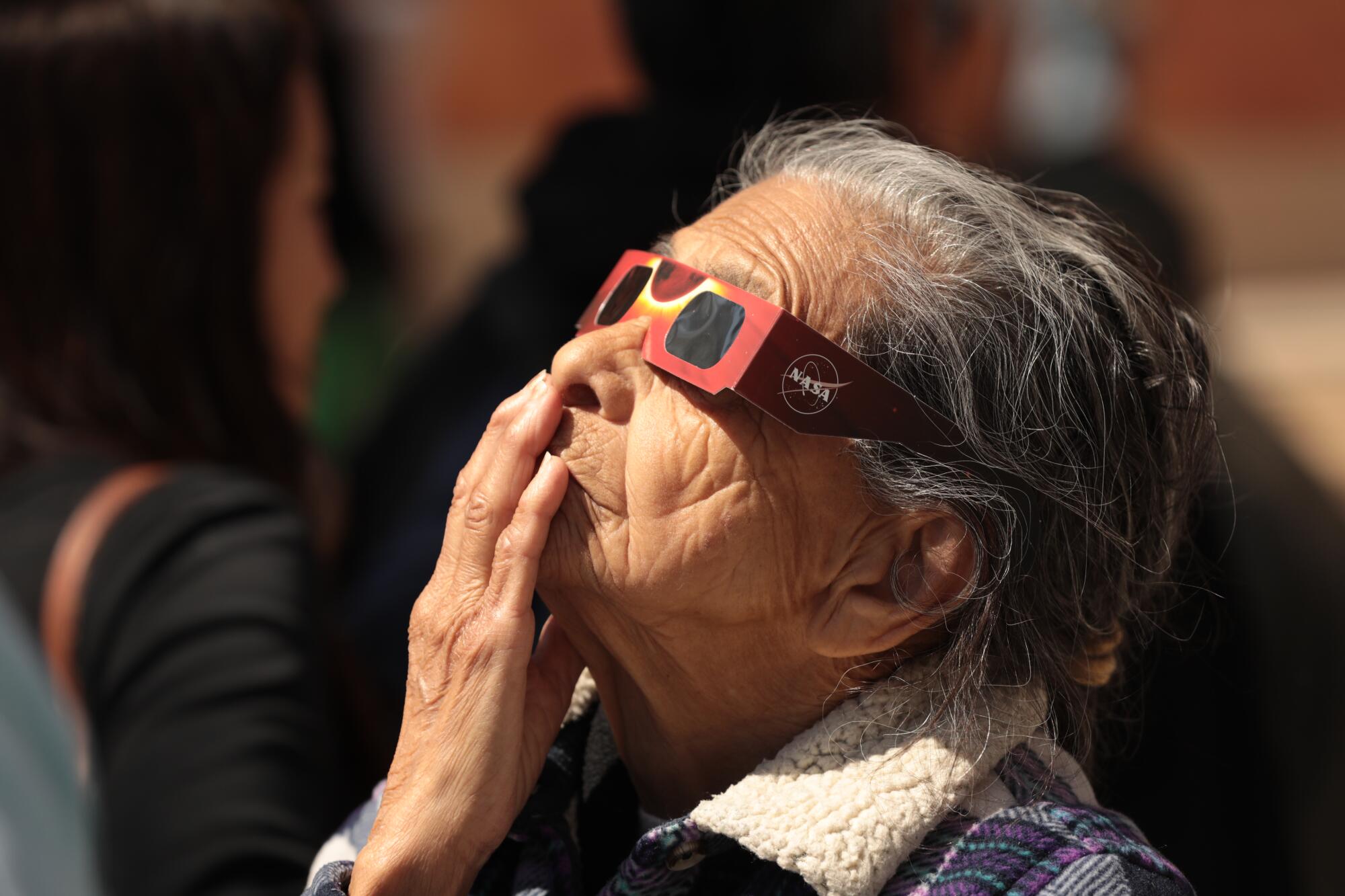
Lydia Monroy, 87, experienced for the first time seeing an eclipse with safety glasses at the California Science Center on Monday. Southern California was far from the “path of totality’’ in which the sun was completely blocked out in other parts of the country.
(Al Seib/For The Times)
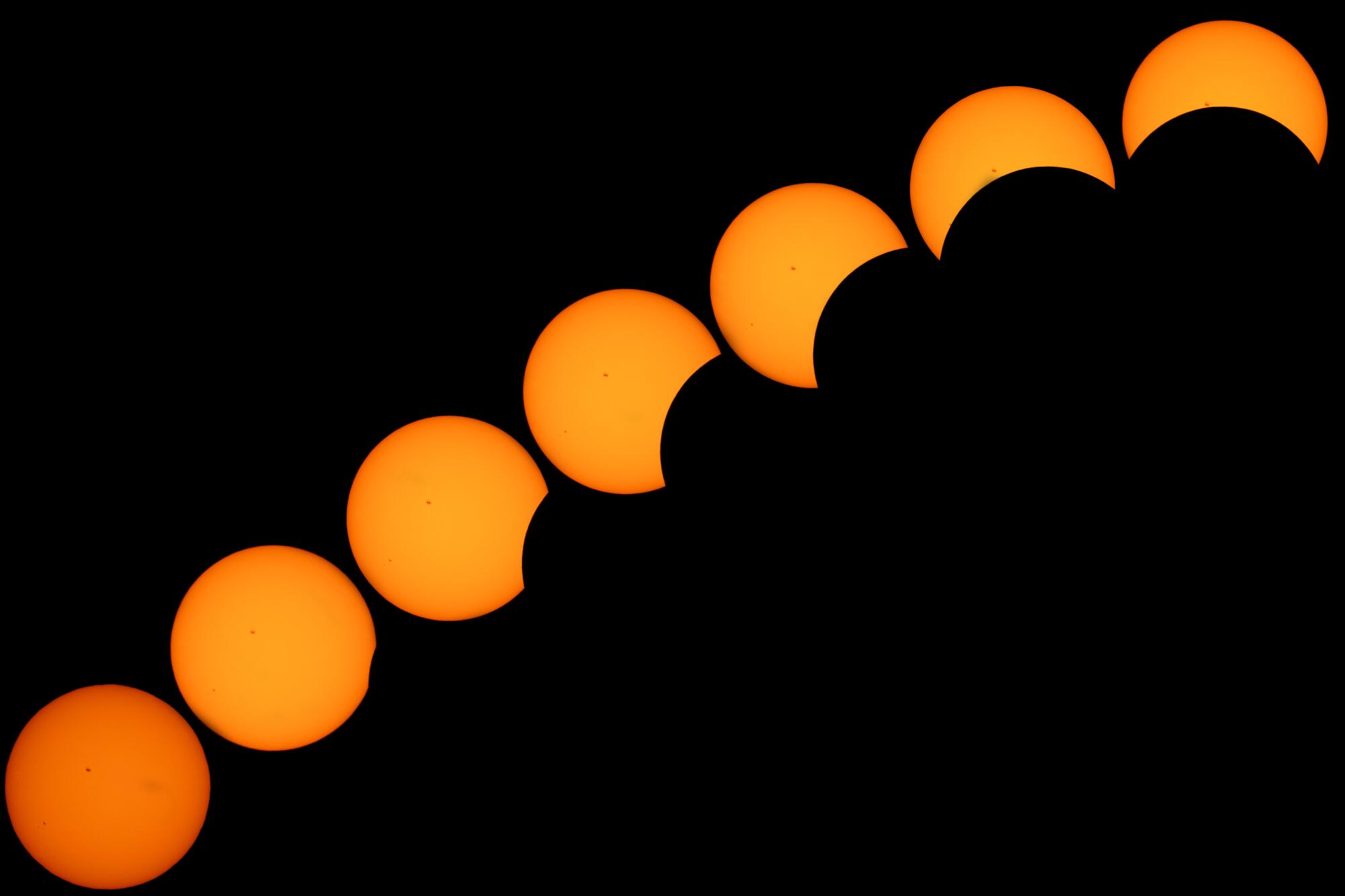
A photo composite as the solar eclipse transitions to maximal moon blockage on Monday in Long Beach.
(Kelvin Kuo/Los Angeles Times)
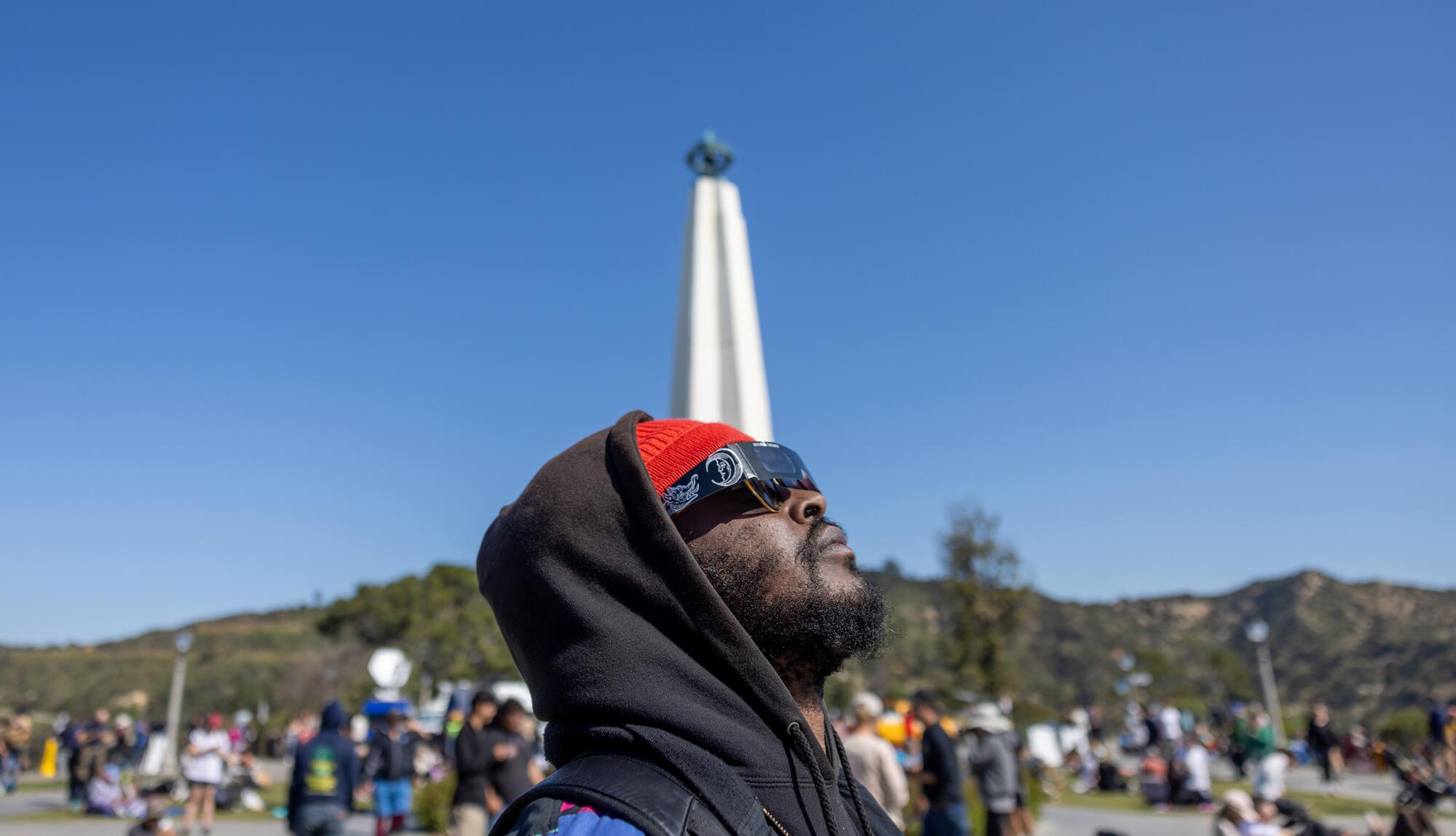
Duke Brobby watches the solar eclipse outside Griffith Observatory on Monday in Los Angeles.
(Brian van der Brug/Los Angeles Times)

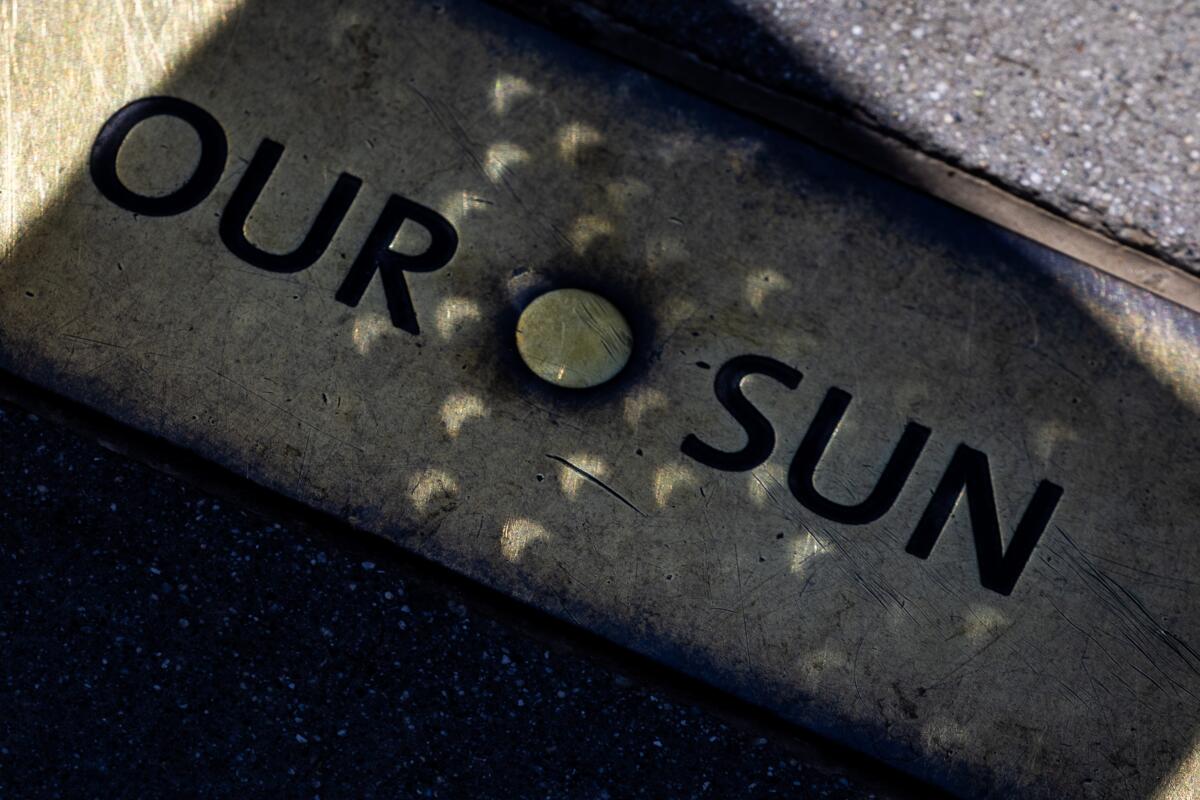
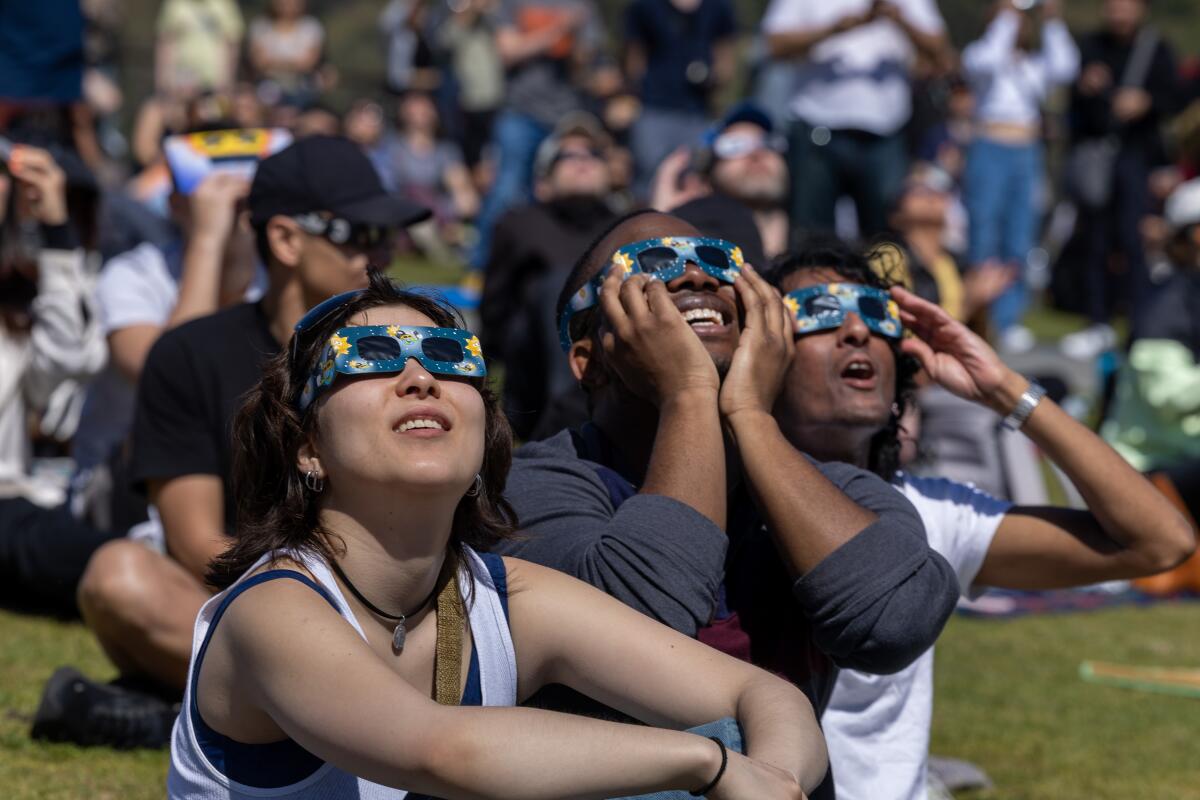
Solar eclipse watchers at Griffith Observatory. (Brian van der Brug/Los Angeles Times)
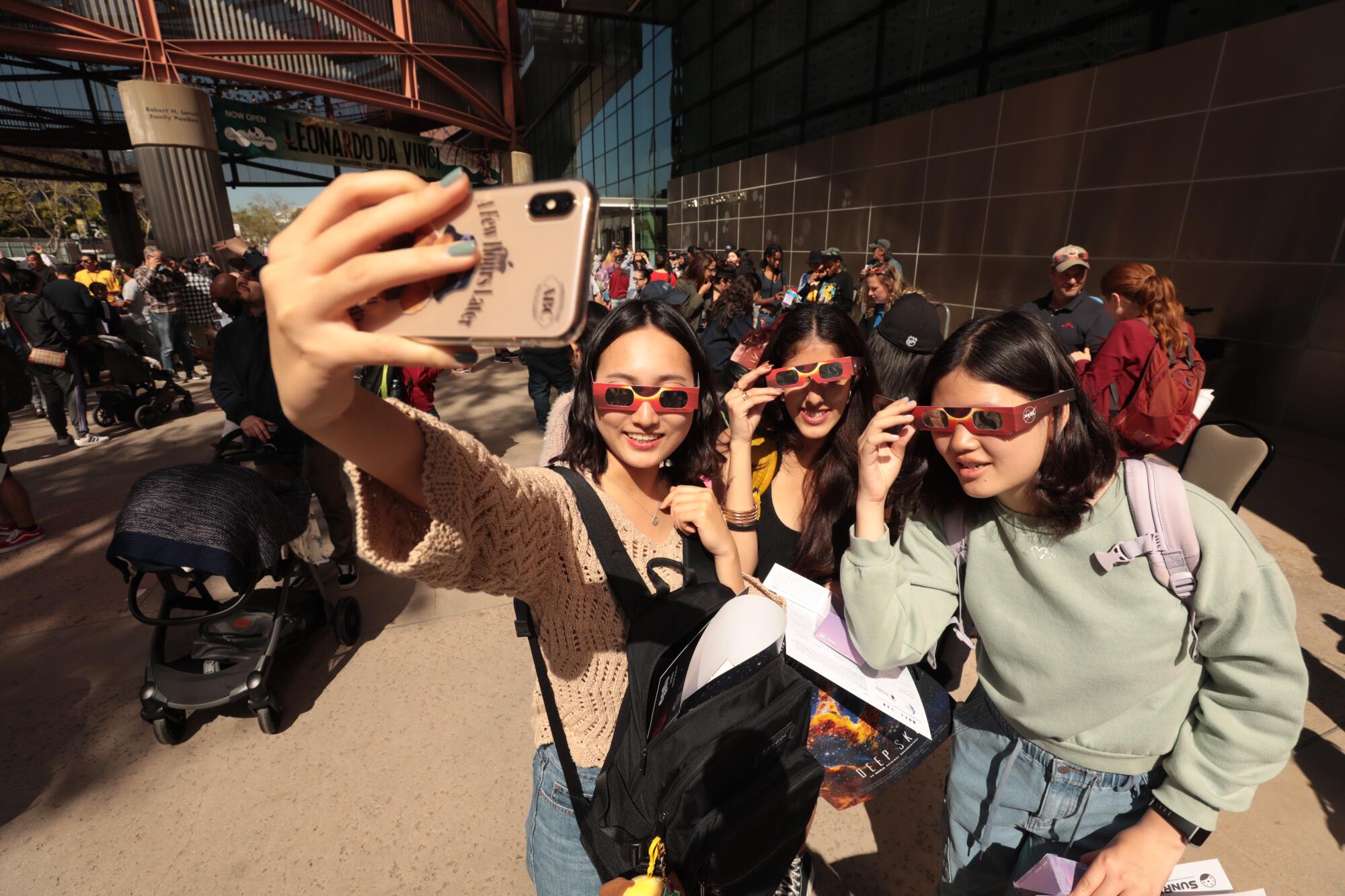
USC students Sunwoo Heo, left, Taara Bhojwani and Hannah Chu were part of the crowd that gathered at the California Science Center wearing protective eyewear and staring skyward to view a partial solar eclipse on Monday.
(Al Seib/For The Times)
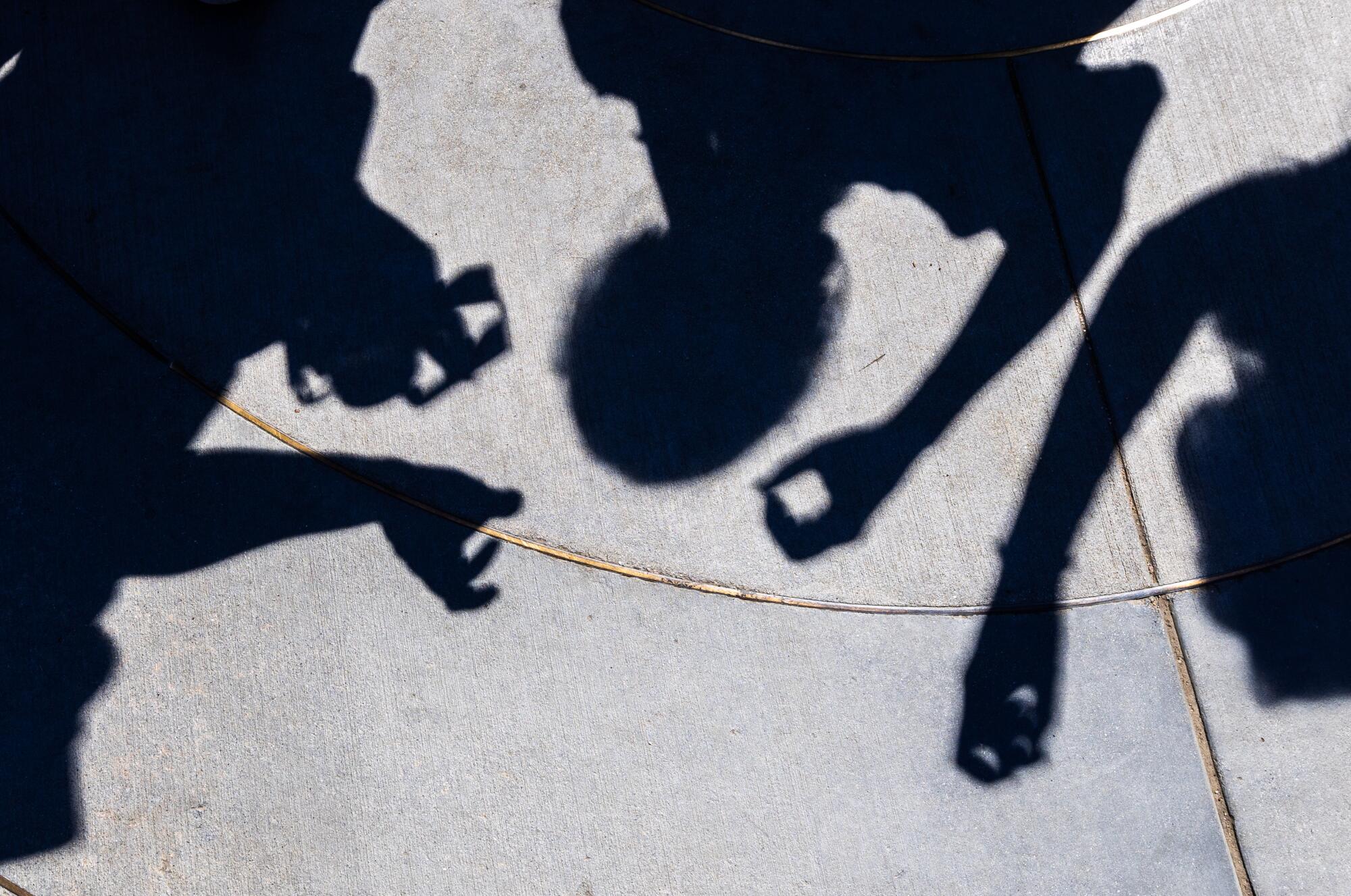
Solar eclipse watchers cast crescent-shaped shadows of the eclipse at Griffith Observatory on Monday in Los Angeles.
(Brian van der Brug/Los Angeles Times)

Noah Caro, left, Mason Areke and Lexi Thorpe, from Pearblossom Elementary in Littlerock, Calif., were part of the crowd that gathered at the California Science Center wearing protective eyewear and staring skyward to view a partial solar eclipse on Monday.
(Al Seib/For The Times)
More to Read
Sign up for Essential California
The most important California stories and recommendations in your inbox every morning.
You may occasionally receive promotional content from the Los Angeles Times.

















